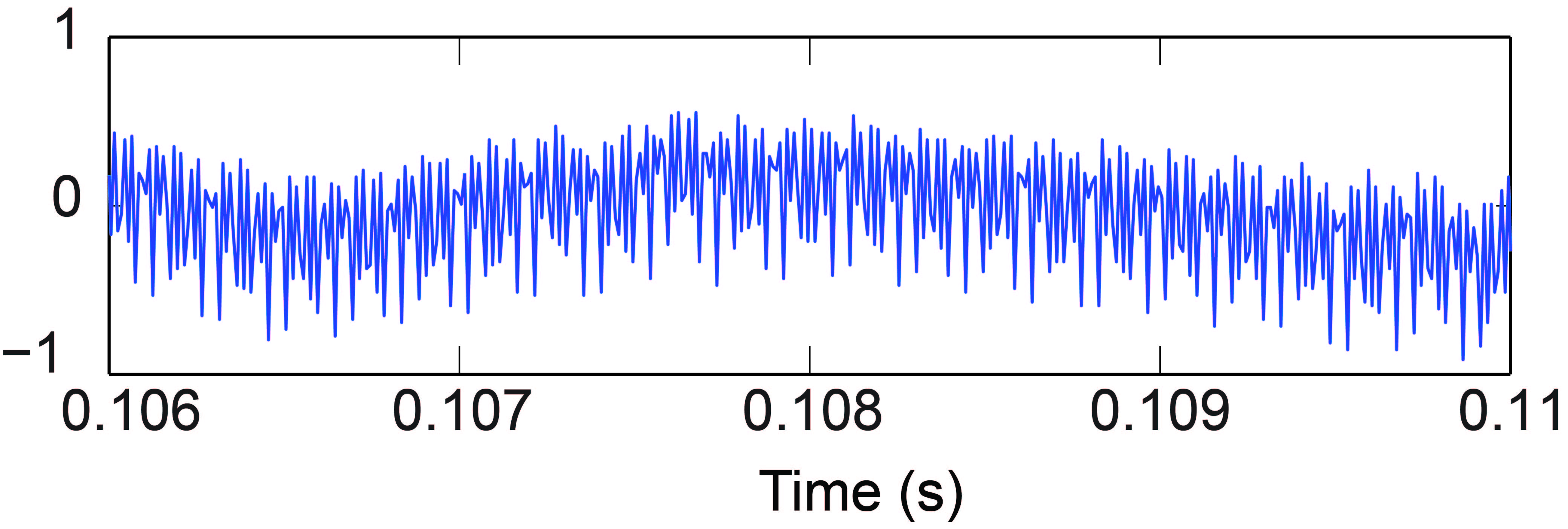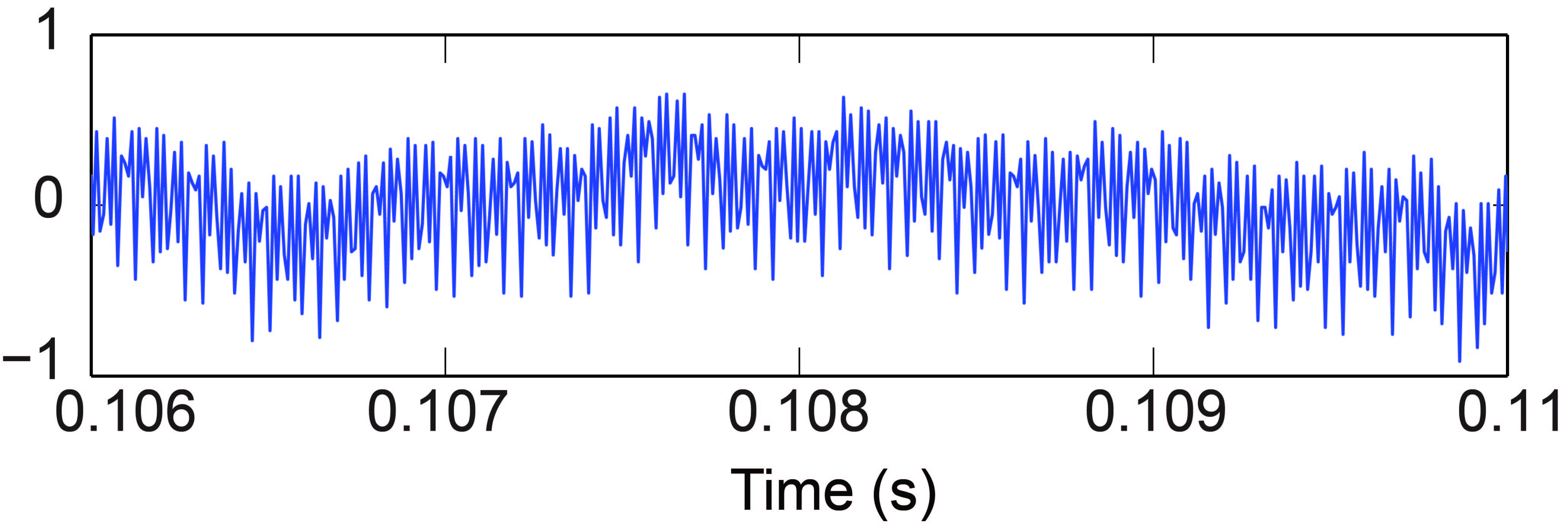Milestone 2
Table of contents
In this milestone, you will use MATLAB to design the signal processing algorithm used by the laser tag system.
Overview
The objective of the signal processing algorithm is to determine from the received signal whether your system has been hit, and if so, what player (frequency) performed the hit.
This figure shows (in the time domain) a signal that is just noise (i.e., no hit):

This figure shows the same signal (also in the time domain) with a square wave at one of the player frequencies added to the noise (i.e., a hit from a laser tag unit):

As a human reader, you are not expected to discern the square wave in the second figure. Your signal processing algorithm will be able to analyze these two signals and determine that the second figure contains a hit, and then determine the frequency of the shooter.
This milestone builds heavily on the work that you did in the Discrete-Time Filters Lab in ECEN 380. During this milestone, the signal processing algorithm will be implemented and tested entirely in MATLAB. In a future milestone, you will take the digital filtering steps designed in this lab and implement them in ‘C’ code on the laser tag system. We test the design first in MATLAB because it is much easier to manipulate and display the involved signals in MATLAB.
Goals
The basic operation of the signal processing system involves the following operations.
- Convert the received signal into a sampled digital signal
- Decimate the signal (a two-step process)
- Filter the sampled signal using your lowpass FIR filter
- Downsample the filtered signal
- Pass the decimated signal through 10 bandpass IIR filters with center frequencies corresponding to each of the 10 player frequencies
- Calculate the energy output from each of the 10 IIR filters
- Indicate a hit if the energy output of one frequency is significantly above the others. (i.e., the signal is not just noise)
- Determine the player
You will be designing the basic algorithms to accomplish this process.
Organization
This milestone is divided into three tasks.
- Task 1: Design decimating system and analyze noise aliasing. (The laser tag system samples the signal at 80 ksamples/second, and the player frequency filters operate at 10 ksamples/s. Thus, we need to downsample the signal, but want to minimize the aliasing of higher frequency noise into the player frequency bands.)
- Task 2: Design 10 bandpass filters. (These filters will operate on a signal sampled at 10 ksamples/s.)
- Task 3: Analyze full system with simulated signal and noise.
Report
You will hand in a single report for this Milestone, which will include your write-ups from all three tasks.
Please make sure that your report:
- Includes all of the items listed in each task’s “What is Needed in the Lab Report” section
- Includes a brief introduction (1 paragraph) describing the high-level goals of Milestone 2
- Includes a brief summary (1 paragraph) for each of the 3 tasks
Also, please make sure to clearly label all graphs so that we know exactly what they are showing us. This should include a descriptive graph title, labels (and units) on all axes of the graph, and any other information needed to interpret the graph.
The lab report for Milestone 2 can be submitted through Learning Suite in PDF format.
Please make your report clear and legible. Points will be deducted if it is difficult to read or follow.
Here is an example of an excellent report.
This example is an older report. The filter design specifications and task ordering are different from the current instructions.